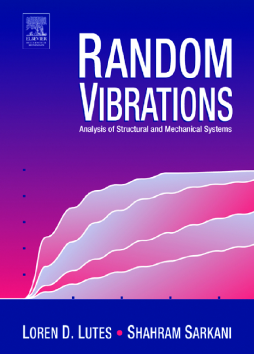
Additional Information
Book Details
Abstract
The topic of Random Vibrations is the behavior of structural and mechanical systems when they are subjected to unpredictable, or random, vibrations. These vibrations may arise from natural phenomena such as earthquakes or wind, or from human-controlled causes such as the stresses placed on aircraft at takeoff and landing. Study and mastery of this topic enables engineers to design and maintain structures capable of withstanding random vibrations, thereby protecting human life.
Random Vibrations will lead readers in a user-friendly fashion to a thorough understanding of vibrations of linear and nonlinear systems that undergo stochastic—random—excitation.
- Provides over 150 worked out example problems and, along with over 225 exercises, illustrates concepts with true-to-life engineering design problems
- Offers intuitive explanations of concepts within a context of mathematical rigor and relatively advanced analysis techniques.
- Essential for self-study by practicing engineers, and for instruction in the classroom.
The textbook by Lutes and Sarkani is a timely and highly valuable addition to the short list of books on random vibrations (or stochastic dynamics) that have appeared in the past two decades. I stress the word “textbook rather than “book, since what they have produced is truly a textbook with numerous instructive examples and end-of-chapter exercises. This is a massive undertaking, with over 600 pages, covering a very broad scope of topics in stochastic dynamics. As the authors suggest, the book can be used for an introductory course on random vibrations and, quite plausibly, for a more advanced course with some additional reading. It can also be used effectively for self study by graduate students and professional engineers who have the requisite mathematical background. Lutes and Sarkani use an informal language that takes away some of the intimidating nature of the random vibrations topic and helps put the reader at ease. While maintaining a high level of rigor, they avoid unnecessary mathematical complexity. Because of these factors, I believe this book is more accessible than most other books on this topic. However, the most valuable aspect of the book, in my view, is the physical insight that the authors provide through their extensive analysis and discussion of formulas and results throughout the book. This aspect is particularly important for beginning students of random vibrations – a topic which by its nature is somewhat abstract and not as easy to interpret as deterministic dynamics.
When teaching an advanced topic such as random vibrations, it is often difficult or undesirable to strictly follow a textbook. We all have our own preferences on notation, style of formulation, and the sequence of topics to be covered. However, I have found it highly effective to have a reference textbook, where students can do additional reading and see a different viewpoint from that presented in the class. Among several textbooks that I have used for this purpose, students at Berkeley have been most satisfied with the earlier edition of this textbook. With the implemented improvements and additions, I be-lieve students will benefit even more from this new edition. Hence, I strongly recommend consideration of this textbook for courses on random vibrations.
Armen Der Kiureghian
University of California, Berkeley
